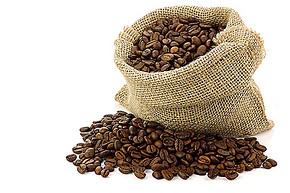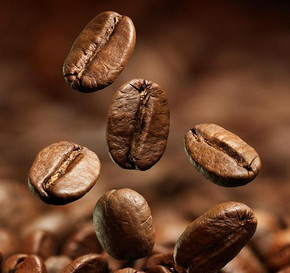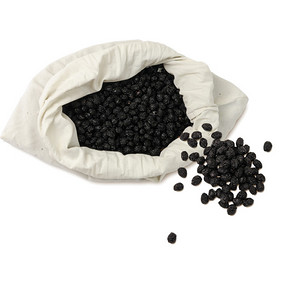Introduction to the Historical varieties of Brazilian Coffee beans the graded flavor and taste characteristics of Brazilian water-washed coffee beans
Follow the caf é (Wechat official account vdailycom) and found that Beautiful Cafe opened a small shop of its own.
Brazilian coffee varieties:
Both Arabica and Robusta are produced, of which Arabica accounts for 70 to 80 percent.
Compared with Sikong coffee, Arabica coffee varieties are Modo Novo, Catuai, Bourbon, Maragoripe and so on. Coffee harvest
There are three or four harvest seasons in a year, and mechanical picking is especially popular. The path of picking is very different from that of other masterpieces. In the process of machine picking, all the fruit on the whole branch of coffee was shaken off, bringing the title of difference in childishness.

Brazilian coffee processing:
Dry treatment is a tradition. In addition, Pulped Natural and semi-washed are also very thoughtful. On opposing farms, coffee fruits that compete against batches are about to be disposed of differently. Dry processing, dry process, also known as natural process, the picked fruit is directly dried in the sun. Coffee fruits can even be left on the branches after they are young, dried in the sun and picked again. Dry treatment of coffee, the sugar in the pulp is arranged by coffee beans, the cup reflects a better complexity and sweetness. Pulped natural is to remove the peel, leaving a sticky, sugar-rich pulp gum wrapped in coffee beans and dried in the sun, leading a life of high sweetness and added purity. Semi-washed, semi-washed, without fermentation, the shelled beans are directly dried in the sun. In addition, there is a kind of bean called Re-Pass. After the coffee fruit is harvested, it is soaked in clean water, and the floating fresh fruit is solicited for treatment. These floating fresh fruits are thought to be overripe beans. Coffee seeds are in contact with pulp for longer and sweeter.
Brazilian Coffee Grade:
When the country controls the import of coffee, the well-known Brazilian defective beans are graded and finely crushed, and the highest grade is 1. 5%. However, Grade 1 is only the highest grade in theory, and in practice, the highest grade is 2. In addition, coffee is divided into strictly soft,soft,softish,hard,rio according to its taste, and the lowest grade is the well-known Rio, known as Rio Taste. The American market does not catch cold to the taste of rio, but Europe and the near East suffer by comparison. During Coffee Coffee, Brazil rolled out discipline and approved farms to trade directly with consumer countries, without having to go through the official grading system. In 1999, Brazil first held the COE tournament.
Brazilian coffee features:
As the largest coffee producer in the country, Brazil supplies commercial beans and fine beans for the global coffee market. Instant coffee is also a critical component of coffee production in Brazil. Western coffee grows mostly at the height of 2000-3000 feet feet, about 500-100m. There are also heights up to 4000 feet, about 1200 m. However, definitely pay for other East Africa, Central and South America need manufacturing countries, often more than 5000 feet of high-altitude hard beans is an insurmountable gap.
Low altitude growth makes Brazilian coffee low acidity. Dry treatment gives Brazilian coffee high sweetness and richness. Brazilian beans grown at low altitude have a relatively low density, are not resistant to re-drying, and simply appear scorched taste. High sweetness, richness and over-baking reflect the nutty and chocolate flavor, which makes Brazilian coffee beans a common blend of espresso. However, the favourite status of Brazilian beans in Italian dilution blending was being seriously attacked during the good Coffee period, and many established macro roasters were gradually moving away from seeking to replace high-altitude hard beans in view of the low density of Brazilian beans.
Important Notice :
前街咖啡 FrontStreet Coffee has moved to new addredd:
FrontStreet Coffee Address: 315,Donghua East Road,GuangZhou
Tel:020 38364473
- Prev

Brazilian Coffee Bean Features Grades and Stories
Pay close attention to coffee comment (Weixin Official Accounts vdailycom ) and find that a beautiful coffee shop opens its own small shop Brazilian coffee beans Brazilian coffee beans refer to all coffee beans grown in Brazil. In addition to Sanduo Division, Brazilian beans are mostly cheap coffee. Mixed coffee beans that can be used for mass production, mostly for heavy roasting. The main ingredient of instant coffee is Brazilian coffee beans. coffee
- Next

How to identify and select coffee beans from Brazil
Follow Cafe (official Wechat account vdailycom) found that the vast majority of Brazilian coffee is sour, sweet, bitter, mild-tempered and versatile. Accompanied by the rich Indonesian Mantenin, there will be a mellow chocolate taste; when matched with fruity and floral African beans, it will highlight special aromas such as fruits and nuts. Work
Related
- Detailed explanation of Jadeite planting Land in Panamanian Jadeite Manor introduction to the grading system of Jadeite competitive bidding, Red bid, Green bid and Rose Summer
- Story of Coffee planting in Brenka region of Costa Rica Stonehenge Manor anaerobic heavy honey treatment of flavor mouth
- What's on the barrel of Blue Mountain Coffee beans?
- Can American coffee also pull flowers? How to use hot American style to pull out a good-looking pattern?
- Can you make a cold extract with coffee beans? What is the right proportion for cold-extracted coffee formula?
- Indonesian PWN Gold Mandrine Coffee Origin Features Flavor How to Chong? Mandolin coffee is American.
- A brief introduction to the flavor characteristics of Brazilian yellow bourbon coffee beans
- What is the effect of different water quality on the flavor of cold-extracted coffee? What kind of water is best for brewing coffee?
- Why do you think of Rose Summer whenever you mention Panamanian coffee?
- Introduction to the characteristics of authentic blue mountain coffee bean producing areas? What is the CIB Coffee Authority in Jamaica?

